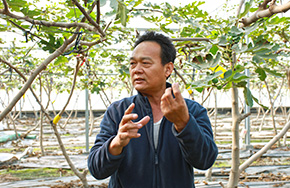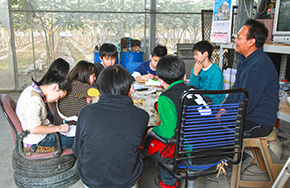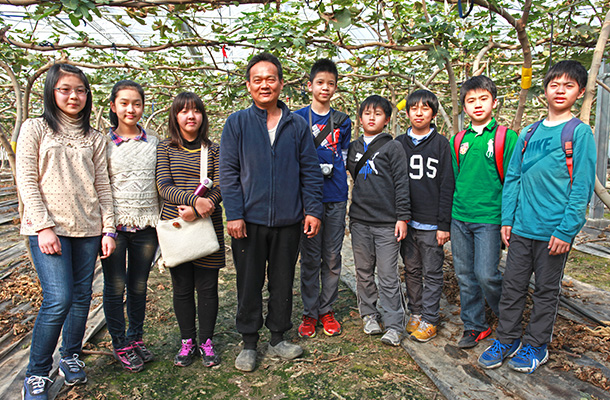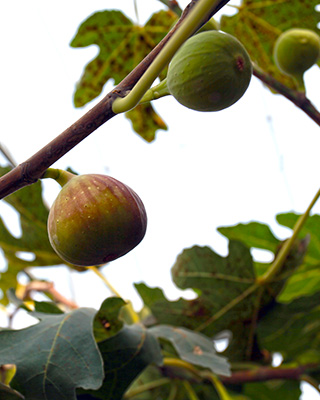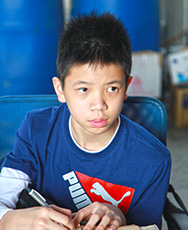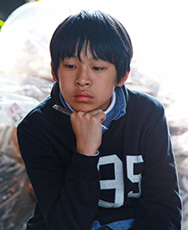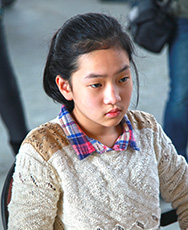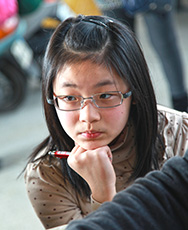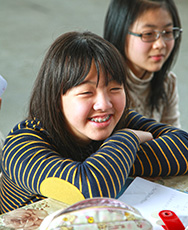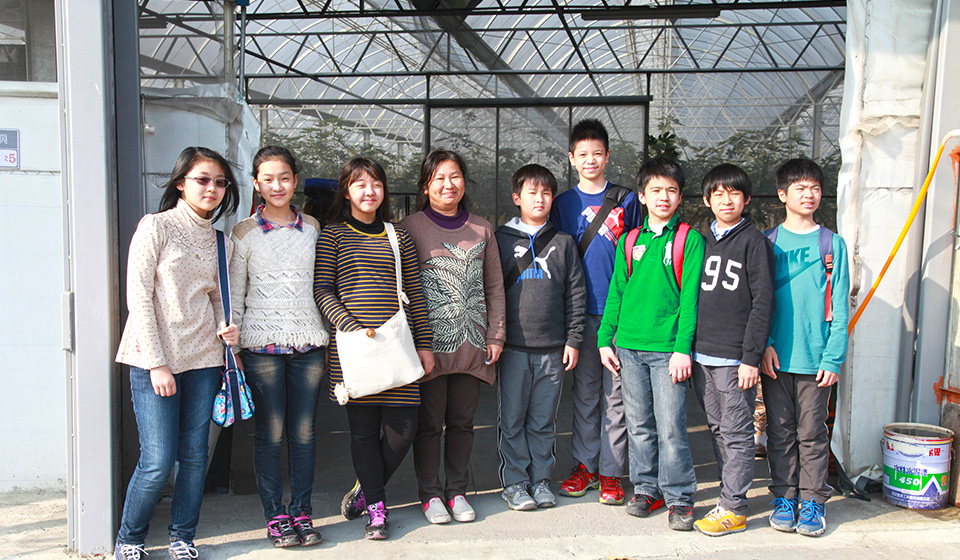| |
| |
|
|
|
|
 |
|
| |
Chia-jen Chang
Education
- National Shalu Industrial Vocational Senior High School
Experiences
- First encountered fig in 2002, and found it to have a special flavor. He thought that ye should share it with all friends and family, thus starting to plan fig.
- The orchard pass the GAP certification
Currently
- Owner, Linnei Chiaren Fig Orchard
- Member, No. 19 Fruit Trees Cooperative, Linnei Township, Yunlin County
|
|
| |
|
|
| |
| |
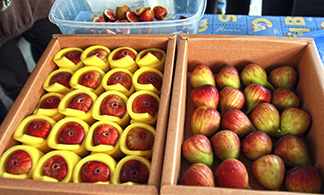 |
| |
| Fruit Masters |
(Tsai-chen) |
4) Linnei Chiaren Fig Orchard
Location: Linnei Chiaren Fig Orchard
Time: January 18, 2014
Q1. When did you start to plant fig? (Shu-han)
A1. I started to plant fig since 2004. Before I planted fig, some agricultural research institutions attempted to plant it, but they did not succeed. At that time, the fig trees were planted outdoor, thus they were vulnerable to pests, diseases, and natural disasters. Ten years ago, I planted greenhouse vegetables. Then, I found fig to be a healthy fruit, and it was planted by few people. So I decided to plant fig.
Q2. Why do you plant fig? (Jie-sheng)
A2. I visited fig orchard, and found that fig trees have strong resistance to disease, and can survive for decades. If it suffers from diseases and pests, it can recover after treatment. Very little pesticide is needed which is healthy for the farmers.
Q3. Which kind of plant does the fig belong to? (Jie-sheng)
A3. The fig belongs to moraceae ficus. The moraceae includes many kinds of plants. Take banyan as an example: it also bears fruits without blooming. The birds eat the fruits, and then the seeds are spread via birds’ feces. Aiyu also belongs to ficus, and we eat their flowers and gelatin.
Q4. What is the edible part of fig? (Tsai-chen)
A4. It is the flower. Actually, the flowers are inside the fruit which contains more than 2,000 flowers. The whole fruit of fig is edible. What we eat is the flower of fig which is its calyx. Different from most of fruits which are borne after blooming, the fig flowers do not bloom, but grow inside the fruits.
Q5. Does the plantin fig cost a lot of money? (Hui-yu)
A5. Yes. This is the reason why it has a relatively high selling price. If the fig can be sold out, I can break even. I have invested a lot of money on my fig orchard because I think it is healthy for people. The price is high, so that I do not lose my investment, but I don’t make a fortune from it either.
Q6. Can the fig be planted all the year round? (Shu-han)
A6. The fig trees need a warm growth environment, thus the period from October to next February and March is the slow season, while the output in other periods is stable.
Q7. Is the environment in Taiwan suitable for the growth of fig? (Hui-yu)
A7. The fig has low requirement to environment. It can survive under extremely high or low temperature, and does not easily die even when it suffers pest damage or heavy rain, but the fruits are not beautiful. Our improvement method starts from agricultural facilities which is using greenhouse for plantation. In this way, the fig trees can resist the damage of rainwater and strong wind. Therefore, it is very suitable to plant fig in Taiwan.
Q8. How could fig be consumed? (Shu-han)
A8. It can be made into fruit vinegar or jam, or directly eaten as fruit. It is also widely used by western restaurants. When the fig is unripe and hard, it can be used to make salad or eat with ham. Currently, we sell most of our figs to restaurants or Red on Tree for jam making. In the peak harvest period, we use excess figs to make fruit vinegar.
Q9. What are the benefits of eating fig? (Yin-cheng)
A9. In order to stay healthy, it is better to eat all kinds of food, especially in-season food. Fig is mature flower; cauliflower is not mature flowers. Fig contains nectar, pollen, and microelements which we rarely consume but are beneficial to our body.
Q10. Why do we rarely see fig in the market? (Tsai-chen)
A10. Delicious fig must be mature; however, the mature fruit is soft with short storage life. It should be refrigerated and may be squashed during transportation, thus increasing the cost. As a result, fig sells at a high price, so rarely seen in fruit shops or supermarkets.
Q11. Is there imported fig in Taiwan? (Tsung-chun)
A11. Currently, most of fresh fig we eat are produced in Taiwan. Importation of fig is not cost-effective. Harvested fig should be delivered to consumers as soon as possible, as fresh fig overripe easily and has short shelf life. Therefore, most figs are grown locally, and only few are imported.
Q12. Do you produce any fig related products? (Wei-tse)
A12. Yes. While we sell fig via our own channels, we sometimes make it into fruit vinegar. Fruit vinegar has a long shelf life, and can be sold to western restaurants for high-end cuisine. That is the only fig product we make right now. We need to consider the cost. The processed products do not generate income if not sold. Before making processed product, I need to invest in equipment, which is quite a burden. So I have not tried other products so far.
| |
|
|
|
| |
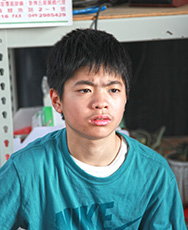 |
|
 |
| |
|
|
|
Q13. In addition to Red on Tree, are there any other channels to sell fig? (Tsung-chun)
A13. Most of sales channels (70%) are restaurants, like the famous chain steakhouse in Taipei. Later, we have a sales channel in Taipei, which is a wholesaler, and restaurants place their orders there. The restaurants may buy a few fruits or a few kilograms. The price of the wholesaler is reasonable, so we have been always working with them. Another source is customers who like to eat fig and place orders online or via phone, and we deliver figs via cold storage and home delivery.
Q14. Does the government provide subsidies for planting fig? (Tsung-chun)
A14. The government provides suggestions and assistances to all farmers who are in need. Our greenhouse costs 4 million NTD, and the government subsidized 1.65 million NTD. The government also hires experts to review the qualification of the vegetables and fruits in the application, including the required facilities, and whether we attend training. Yunlin County Government has the feedback fund from Sixth Naphtha Cracking Plant, because Yunlin County Government aims at developing Yunlin into an agriculture county, and sponsors Agriculture Expo. I hope that the agriculture can have a better development in Yunlin County.
Q15. What difficulties do you meet in the process of reaching national organic standard? (Yin-cheng)
A15. There are regulations for organic standard in Taiwan which we need to follow during the plantation process. The soil, water quality, and fertilizer must all pass the inspection, in order for us to receive the certification. As Taiwan has limited land, the farmlands are very close. The fertilizers or chemicals used by other farmlands may easily influence my land. Thus, it is difficult to be totally organic. I am working to obtain GAP (Good Agricultural Practice), and the plantation methods must meet the regulations. I try to do my best to make my figs toxic-free.
Q16. What do you think about food safety? (Wei-tse)
A16. The government has enacted many regulations on agriculture; as long as the farmers follow those regulations, there will be no problems. For example, some time ago, illegal pesticide was detected on local banana, which not only damaged farmers’ reputation, but also consumers’ health. Currently, the government monitors the use of pesticide, because food safety is an important issue. The improper use of pesticide brings the most damage to farmers, then consumers. The government should strictly monitor the use of pesticide in order to ensure food safety.
Conclusion
From the interview, we learned about the planting methods, disaster prevention, and sales and processing channels. The farmers shared their accumulated wisdom with us, and provided us with valuable information. For example, due to limited land and insufficient distance between farmlands, it is very difficult to achieve organic. Regarding food safety, as long as the farmers follow the governmental regulations on plantation, there will be no food safety problem. In recent years, local agriculture has been introduced into elementary school curriculum, with the aim to combine the education with life. We had the opportunity to witness the farmers’ hardship, their passion for the fruits they grow, and their attachment to the land. They think that their efforts are worthwhile when the customers find their fruits to be delicious. It is the diligent work of the farmers that make Taiwan the Kingdom of Fruits!
|








